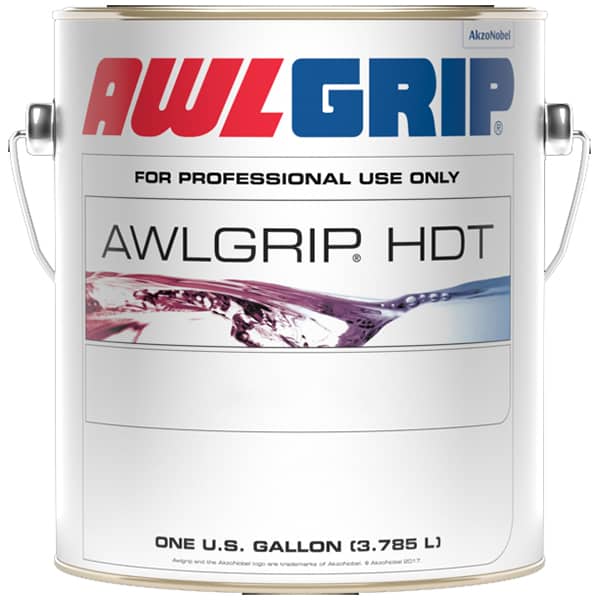
DO:
1. Wash the surface regularly with Awlwash (73234) or Awlwash 2.0 (73235) and water.
2. Use only mild solvents to remove stubborn stains. Awlprep T0008, mineral spirits and xylene are acceptable for use on Awlgrip HDT.
Do not allow solvent to dry on the surface or puddle and soak into the surface. Wash these areas with Awlwash and water to remove solvent residue.
3. Always thoroughly rinse surfaces with fresh water after cleaning with Awlwash or solvents.
4. Use distilled white vinegar and hot water to remove stubborn salt stains. Washing with Awlwash after use of vinegar is recommended.
5. Use Awlcare (73240) by hand only to remove mild diesel soot stains.
Protecting the surface with Awlcare will help maintain the gloss of Awlgrip HDT. Awlcare is a hand applied, non-abrasive, synthetic polymer. It will remove mild stains, water spots and diesel soot while increasing resistance to attack from acid rain and other pollutants, when applied regularly.
DO NOT:
1. Do not use traditional waxes. Awlgrip has developed Awlcare Protective Polymer Sealer for those who want to enhance their finish and need the additional cleaning power of a hand applied, dry wash product.
2. Do not use abrasives, scratch pads or polishing compounds. Scratching the surface gives dirt a place to cling while wearing out the resin layer. Using abrasives of any kind will reduce the overall life of the finish and voids the Awlgrip Limited Warranty.
3. Do not allow contact between the Awlgrip HDT and teak cleaners.
4. Do not allow metal polishes to dry on the surface of Awlgrip HDT. Metal polishes may discolor and stain the painted surface.
5. Do not use strong solvents (eg. lacquer thinner, M.E.K., acetone) to clean Awlgrip HDT.
6. Do not allow wet equipment (e.g. seat cushions, coils of line, sails, sail covers, coolers) to trap and hold moisture against Awlgrip HDT.
7. Do not ‘shrink wrap’ or tightly bind Awlgrip HDT surfaces with plastic wrappings. The cover system, whether synthetic or natural fiber, should be ventilated to allow the coating system to ‘breathe’.
